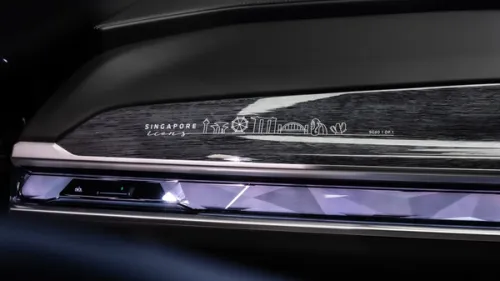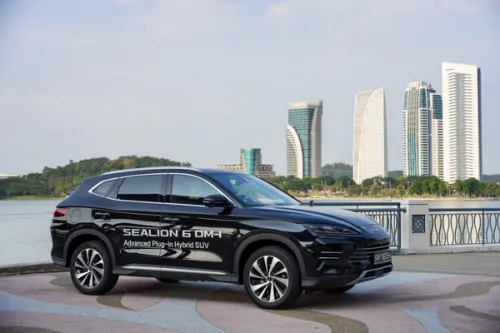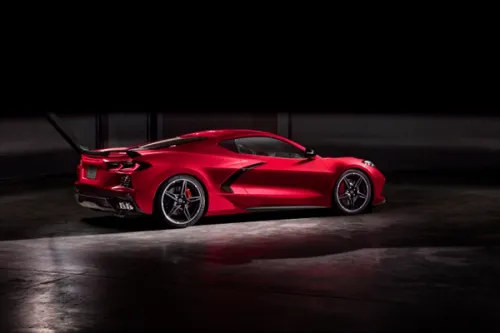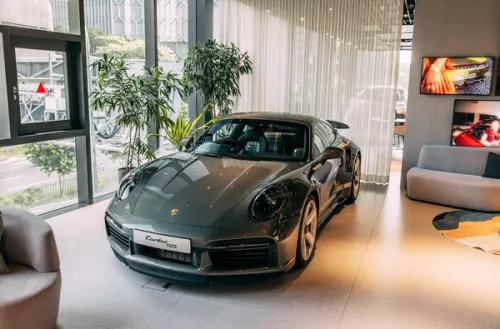Toyota Prius Hybrid Review: Toyota’s Stylish (part-time) Electric car
Toyota has made being eco-friendly a fashion statement with the futuristic and stylish 2nd generation Prius


Let’s be honest - the first generation Prius had about the same sex appeal as a Toyota Corolla Altis. It may have been the world’s first mass-produced 4-door sedan with a petrol/electric powerplant, but it didn’t look like very exciting. Its tall and boxy lines were square and upright, which made it very space-efficient, but no one bought it for its looks.
But it sold well nonetheless, especially in the US. Not to the fashion-conscious trendy types, but to greenies and Democrats, those that went against the grain and didn’t buy SUVs and other gas-guzzlers because they were using too much petrol. A few of these people happened to live in Hollywood, and happened to be well-known mover’s and shakers in Tinseltown. These people started attending major events, such as the Academy Awards, not in black limousines, but in their tiny Prius’. Not only did these cars make a statement and grab attention, and that’s how the nondescript little Toyota became a trendy fashion statement – not intentionally, but like all good things, because it was the right car at the right time. The crisis in the Middle East then followed, and fuel prices started to soar, and the little Toyota Prius (and the Honda Civic Hybrid) showed the Big Three in Detroit just how wrong they were banking on big SUVs like Hummer and the Ford Explorer to continue to sell in big numbers.
Now that the Prius had become a fashion statement, Toyota decided that the second generation model should look the part. Out went the stodgy notchback, replaced instead by a sleek 5-door hatchback, an attractive and eye-catching car that could sell on looks alone. It certainly looks much trendier and modern than any other model in the Toyota line-up. Stylish details such as the integrated rear spoiler that splits the rear windscreen into two panels is certainly shows a level of daring that is seldom seen in Toyotas.
It is also significant that the Prius is a hatchback – in the first generation model (and in the Honda Civic Hybrid), the flat battery unit was mounted directly behind the rear passenger’s seat, preventing the rear seat from being folded down, and thus restricting the versatility of the car. As a hatchback – a fully-functional one at that – with a split folding rear seat, Toyota is showing the public that the Prius is a petrol/electric hybrid that doesn’t compromise flexibility or style. One can have a sleek sporty car, and be eco-friendly and green at the same time.
Toyota has also taken the expensive route of making the Prius a stand alone model that does not share its branding or any components with either the Corolla Altis or Camry. This is quite different from the approach Honda has taken with the Civic Hybrid, which is an additional model to the Civic range.
Standing out seems to be quite important aspect of the Prius. It certainly does so with its styling, and this carries on in the cabin. There is certainly no mistaking the Prius’ dashboard for any other Toyota, or any conventional car for that matter. Instead of a conventional instrument panel in front of the driver, there is a just space-age looking LED display glowing out of a slit at the base of the windscreen. Insread, what dominates the cabin is a centrally-mounted LCD touch –screen that doubles as an interactive control panel. It is all very futuristic, and one really feels that the Prius is a vehicle from the 22nd century, tele-ported back in time so that we can drive it today.
In addition to tuning the radio or adjusting the air-conditioning, the central LCD can be set to display two interesting interactive pictograms – one is a tabulation of the car’s fuel consumption and battery charging status, and the other is a graphic of which powerplant is driving the car at any given moment. The second display is really captivating, designed like a flow chart with blinking arrows and moving wheels – it can prove to be quite a distraction for the driver, but endlessly entertaining for the passengers.
This other-worldliness aspect of the Prius is everywhere – it begins when one starts the car. Like any car from the future, it has no key – rather the transponder in your pocket (or purse) communicates with the car and allows the driver to start the car. One pushes a button to start the car of course, but even after doing so, nothing seems to happen. All the displays start to glow, but the engine doesn’t switch on – it’s a bit unnerving at first, but in faith, one steps on the accelerator pedal and moves off. The car is eerily quite, and moves off powered solely on electric or “EV” mode. It is only at about 30km/h that the engine starts to fire up.
As one drives on and slows down again, the engine, electric motor and battery work like a well-oiled relay team, coming on or off, or working together to keep the car moving. At first one is conscious of even slightest jerk or the switching on and off of the engine, but after a while, once the gimmick wears off, the Prius actually performs all its mode changes quite seamlessly. Perhaps that’s why Toyota has made the central LCD display so prominent.
Apart from its radical drivetrain, there are other reminders that make the Prius feel futuristic and a little out of the ordinary. The transmission selector is really unique – a stubby little knob that sticks out of the dashboard and moves in an h-shaped pattern - it controls the forward and reverse motion of the car, and re-generative mode of the engine. Toyota has also transplanted all the switches to the steering column, either as a stalk or a button on the central boss – everything is within reach of the driver, and there is no need to take one’s hands off the steering wheel. The only problem is that the central boss moves with the steering wheel, which is sometimes annoying.
Performance-wise, the Prius feels like a 2.0-litre car, even though its only got a 1.5-litre engine under its bonnet. It’s even possible to restrict the Prius to running solely off its battery by pushing the “EV mode” button, but the car is restricted to a 45km/h speed limit. The ECU will start the engine again as soon as it thinks the battery needs to be re-charged. At parking speeds, the Prius runs exclusively off its electric motor, and the car is virtually silent.
So if you’d like a vision of the future – as Toyota sees it – then the Prius makes a very convincing statement. It matches the performance of conventional 2.0-litre car in all aspects except fuel consumption, primarily because the engine is switched off as often as possible. Toyota claims that the Prius does 23.3 kilometres per litre in combined urban and long distance driving, but there is an asterisk that states that the “actual mileage may vary according to driving conditions”.
Whatever it's actual fuel consumption may be, the Prius is presently the best-selling petrol/electric hybrid in the world, and Toyota has sold over 100,000 units since production of the first model started in 1997. If only Toyota could inject some of the Prius’ flair and creativity into the other vehicles in its line-up.
Credits: Justin Lee








Get the Best Price for your used car
from 500+ dealers in 24 hours

- Convenient and Hassle-Free
- Consumer Protection
Transparent Process
With No Obligation








